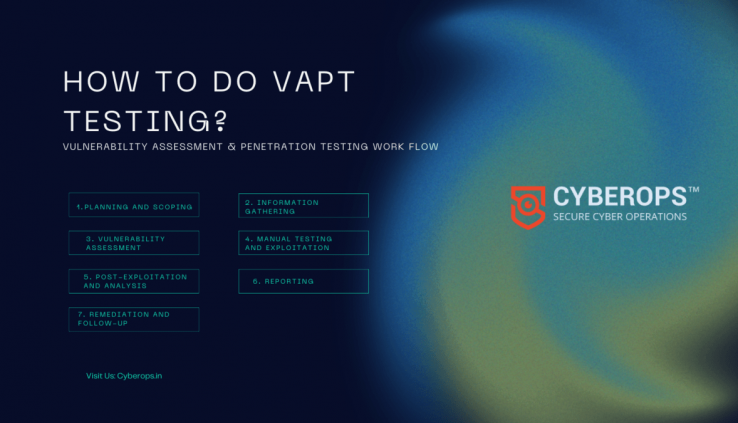How to do VAPT testing?
By Prempal Singh
VAPT (Vulnerability Assessment and Penetration Testing) is a process of assessing and testing the security of a computer system, network, or web application to identify vulnerabilities and potential entry points that could be exploited by attackers. Here’s a general outline of the steps involved in performing VAPT testing:
Planning and Scoping:
- Define the scope of the assessment, including the systems, networks, or applications to be tested.
- Identify the objectives, goals, and constraints of the testing process.
- Determine the rules of engagement, such as testing methodologies, access levels, and testing timeframes.
Information Gathering:
- Gather relevant information about the target systems or applications, such as IP addresses, URLs, network diagrams, documentation, etc.
- Conduct reconnaissance activities to gain more insights into the target, including open ports, services running, and potential vulnerabilities.
Vulnerability Assessment:
- Utilize automated scanning tools (e.g., Nessus, OpenVAS) to identify known vulnerabilities in the target systems or applications.
- Analyze the scan results and prioritize vulnerabilities based on their severity and potential impact.
Manual Testing and Exploitation:
- Perform manual testing to validate and verify the identified vulnerabilities.
- Utilize various techniques and tools to exploit the vulnerabilities, attempting to gain unauthorized access or escalate privileges.
Post-Exploitation and Analysis:
- Document the successful exploitation of vulnerabilities and any potential impacts.
- Assess the overall security posture of the system, network, or application based on the identified vulnerabilities.
- Provide recommendations for mitigating the identified vulnerabilities and improving the security.
Reporting:
- Prepare a comprehensive report detailing the findings, including a summary of vulnerabilities, their severity, and potential impacts.
- Include a clear and concise description of the testing methodology and steps followed.
- Provide actionable recommendations for addressing the identified vulnerabilities and improving the security posture.
Remediation and Follow-up:
- Work with the system owners or application developers to remediate the identified vulnerabilities.
- Conduct follow-up testing to verify that the vulnerabilities have been properly addressed.
- Implement security best practices and ongoing monitoring to ensure the system remains secure over time.
It’s important to note that VAPT testing should be conducted by experienced professionals with knowledge of security testing methodologies and tools. Additionally, it’s crucial to obtain proper authorization and consent before performing any security testing to avoid legal and ethical issues.
Also read this blog: Why your organization need VAPT?

